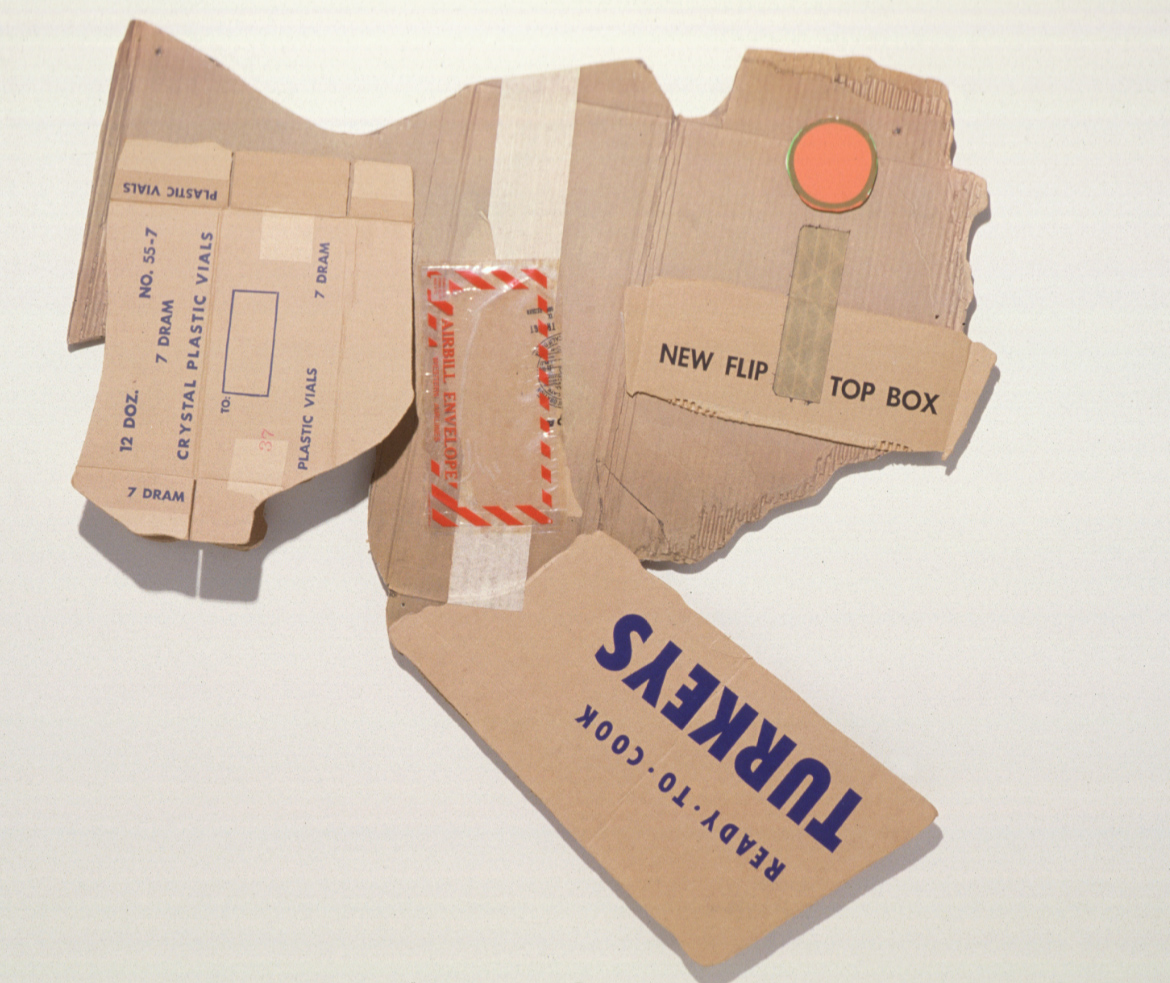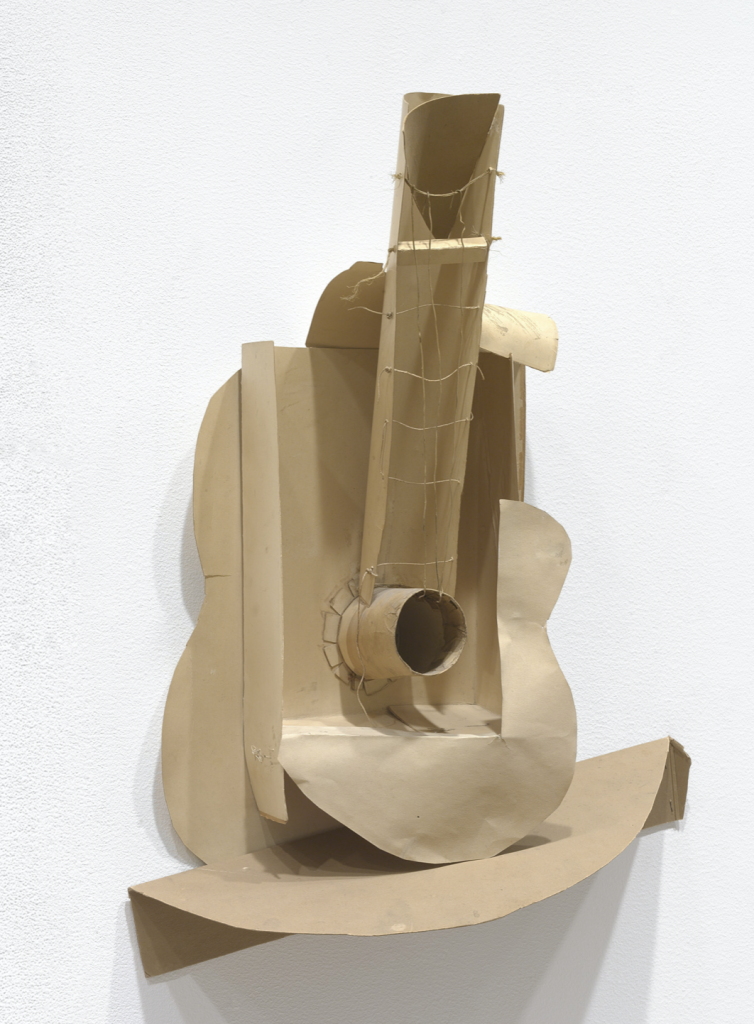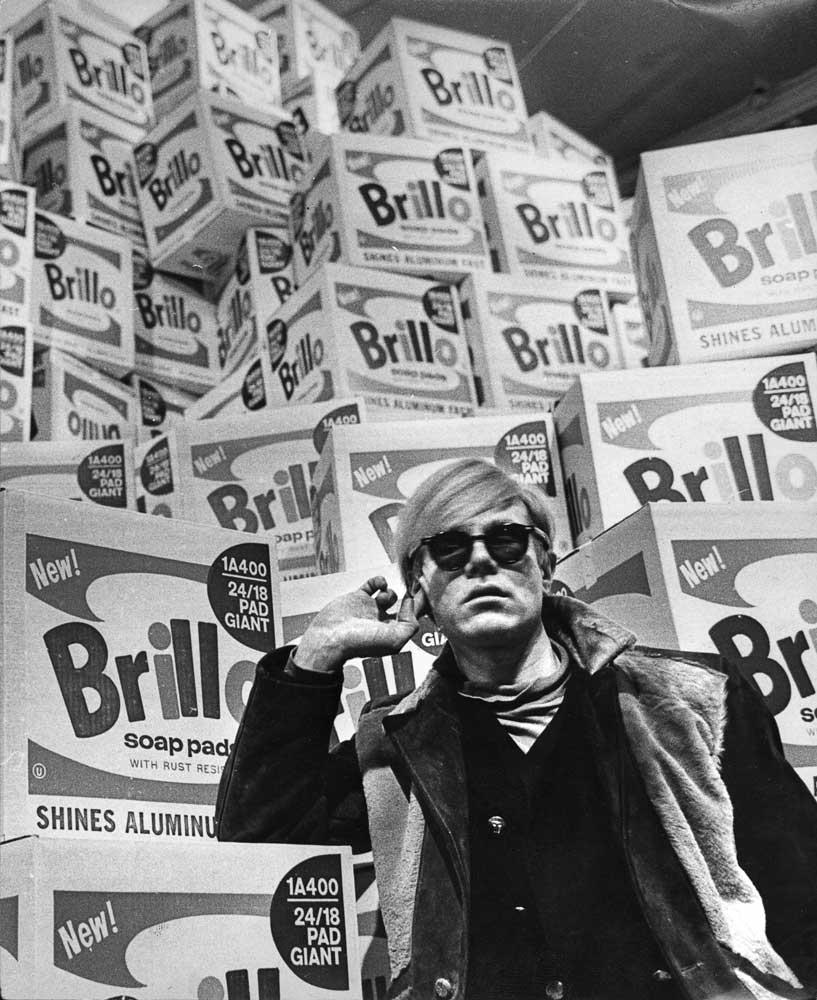Object of the Week: Cardbirds

While many of us are quarantined and shopping for necessary (and unnecessary) items online, the sight of Amazon and USPS boxes at front doors has become ubiquitous. In 1971, Robert Rauschenberg created a series of works based off of cardboard boxes: Cardbirds. While Rauschenberg was not the first artist to work with cardboard or to incorporate boxes in his work (Pablo Picasso had created his famous guitars in 1912 out of cardboard), his Cardbirds are more involved than one might think. Often mistaken for actual crushed boxes, the works in fact combine corrugated cardboard with offset photolithography and screen printing. Each crease, fold, and label was meticulously reproduced to mimic cast off boxes, and achieve a trompe l’oeil effect.

By the early 1970s, many artists living and working in New York began to take a hiatus from the City: Jasper Johns set up a studio in Saint Martin; Donald Judd visited Marfa, Texas; Sol LeWitt spent more time in Italy; and Robert Rauschenberg found himself on Captiva Island, off the west coast of Florida.1 At the time, Rauschenberg said, “Captiva is the foundation of my life and my work; it is my source and reserve of my energies,” and “In New York, I never had time.”2 While the drivers are different today, it’s interesting to see many New Yorkers (with the means to do so) fleeing New York City, and how this will translate to the art that is being made.
Looking closer at Rauschenberg’s Cardbirds, one can’t help but notice the playfulness of these pieces—the boxes’ original forms flattened into shapes resembling a turkey or spaceship (both birds and space were a common theme in his work). There is something humorous about spending so much effort recreating something he found in an alley. While these works were produced at Gemini G.E.L. in Los Angeles, it was in Captiva where Rauschenberg became intrigued with the medium of cardboard, “a desire built up in me, “ he said, “to work in a material of waste and softness.”3 While he may have attempted to portray what we would today call globalization, the intent was very different than some of his contemporaries. Andy Warhol’s famous Brillo Boxes, for example, were paint and silkscreen ink on wood, and elevated the mundane and commercial to an art object. Donald Judd’s Minimalist Untitled works from 1969 were literal, specific objects. However, both Judd and Warhol’s works might seem overly polished and less “real” than Rauschenberg’s worn and discarded cardboard forms.

Accessed May 27, 2020,
https://www.artandobject.com/articles/swedens-moderna-museet-comes-clean-warhol-brillo-box-scandal


As we look at contemporary artists working today—nearly 50 years after Rauschenberg’s Cardbirds—we see similar visual languages employed. Walead Beshty packages his works in FedEx boxes, intentionally allowing the contents to shatter and crack, serving as a marker of their journeys. Santiago Sierra uses cardboard boxes in a provocative manner, with actual people inside them, to shed light on the plight of political exiles.





Which brings us back to our current plethora of packages: ripe material for creation and available in excess. Will we be seeing more of these everyday materials on a gallery wall in the years to come? How would Robert Rauschenberg have responded to these times and these materials? I would guess playfully and insightfully.
– Manish Engineer, SAM Chief Technology Officer